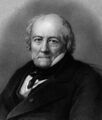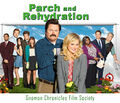Template:Selected anniversaries/February 3: Difference between revisions
No edit summary |
No edit summary |
||
| Line 25: | Line 25: | ||
File:Jean Baptiste Biot.jpg|link=Jean-Baptiste Biot (nonfiction)|1862: Physicist, astronomer, and mathematician [[Jean-Baptiste Biot (nonfiction)|Jean-Baptiste Biot]] dies. He established the reality of meteorites, made an early balloon flight, and studied the polarization of light. | File:Jean Baptiste Biot.jpg|link=Jean-Baptiste Biot (nonfiction)|1862: Physicist, astronomer, and mathematician [[Jean-Baptiste Biot (nonfiction)|Jean-Baptiste Biot]] dies. He established the reality of meteorites, made an early balloon flight, and studied the polarization of light. | ||
||1864: Petrus Jacobus Kipp dies ... Dutch apothecary, chemist and instrument maker. He became known as the inventor of the Kipp apparatus, chemistry equipment for the development of gases. | |||
||1884: Gotthilf Hagen dies ... civil engineer who made important contributions to fluid dynamics, hydraulic engineering and probability theory. Pic. | ||1884: Gotthilf Hagen dies ... civil engineer who made important contributions to fluid dynamics, hydraulic engineering and probability theory. Pic. | ||
Latest revision as of 05:47, 28 April 2023
1468: Blacksmith, goldsmith, inventor, and publisher Johannes Gutenberg dies.
1811: Scientist and author Johann Beckmann dies. He coined the word technology, meaning the science of trades, and was the first to teach technology and write about it as an academic subject.
1862: Physicist, astronomer, and mathematician Jean-Baptiste Biot dies. He established the reality of meteorites, made an early balloon flight, and studied the polarization of light.
1893: Mathematician Gaston Julia born. He will devise the formula for the Julia set, which consists of values such that an arbitrarily small perturbation can cause drastic changes in the sequence of iterated function values. Julia's work will later prove foundational to chaos theory.
1925: Self-taught electrical engineer, mathematician, and physicist Oliver Heaviside dies. Heaviside made major breakthroughs in the applied mathematics of electrical engineering; although he was at odds with the scientific establishment for most of his life, Heaviside changed the face of telecommunications, mathematics, and science for years to come.
1927: Mathematician and checkers player Marion Tinsley born. Tinsley will be "to checkers what Leonardo da Vinci was to science, what Michelangelo was to art and what Beethoven was to music."
1929: Mathematician and engineer Agner Krarup Erlang dies. He invented the fields of traffic engineering, queueing theory, and telephone networks analysis.
1959: Cantor Parabola and Gnotilus at Athens hailed as "a triumph of art and crime-fighting."
1961: The United States Air Forces begins Operation Looking Glass, and over the next 30 years, a "Doomsday Plane" is always in the air, with the capability of taking direct control of the United States' bombers and missiles in the event of the destruction of the SAC's command post.
1975: Physicist and engineer William D. Coolidge dies. He made major contributions to X-ray machines, and developed ductile tungsten for incandescent light bulbs.
2009: Premiere of Parch and Rehydration, an American hydrological satire mockumentary sitcom television series about a perky, mid-level plumber in the Water Department of Drownee, a fictional town in Indiana.










